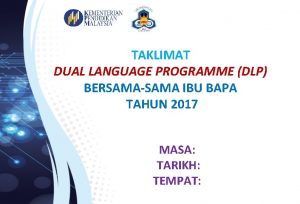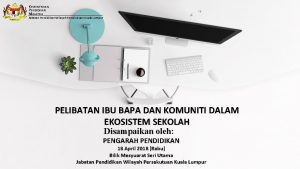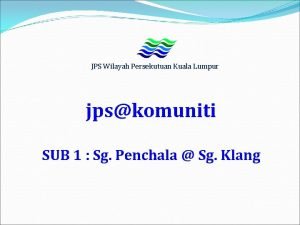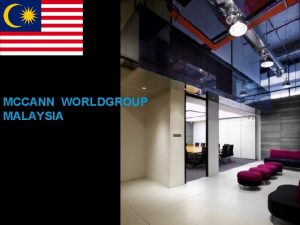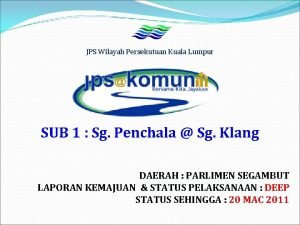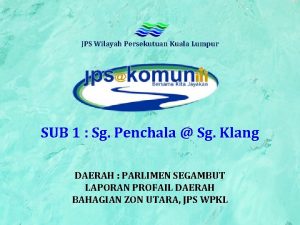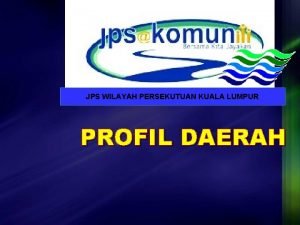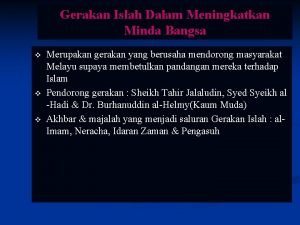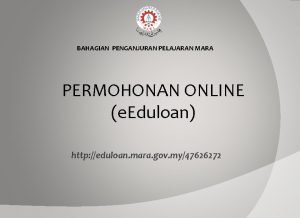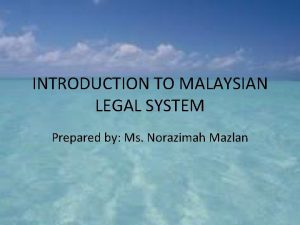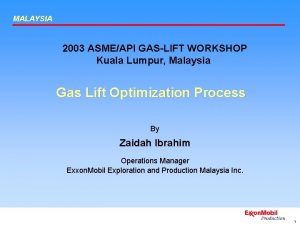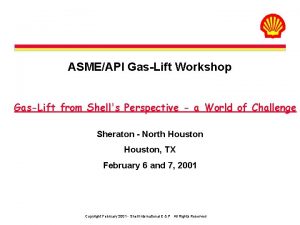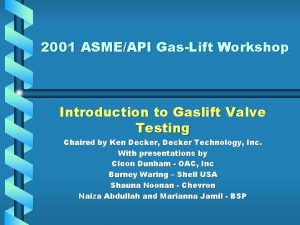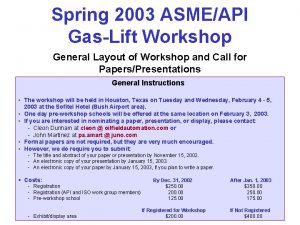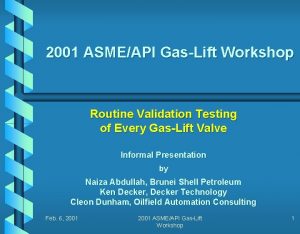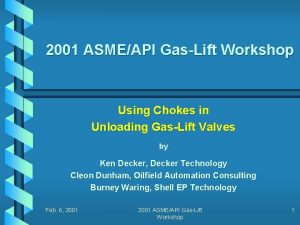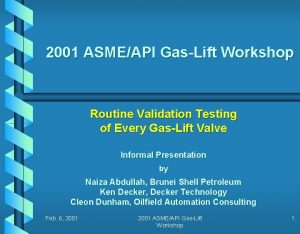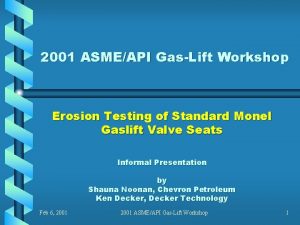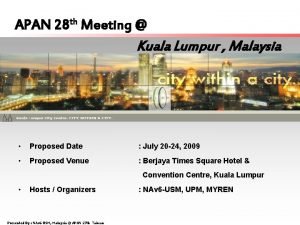2003 ASMEAPI GASLIFT WORKSHOP Kuala Lumpur Malaysia Dual












- Slides: 12

2003 ASME/API GAS-LIFT WORKSHOP Kuala Lumpur, Malaysia Dual Gas Lift – EMEPMI Experience By Sies Hussain Exxon. Mobil Exploration and Production Malaysia Inc. sbh/2003 ASME/API Gas Lift Workshop, KL

EMEPMI UPSTREAM OPERATIONS BLOCK H BLOCK SB 302 SKA TH AIL SKD PM 5 AN D SKC PM 8 KUALA TERENGGANU s ra St KUALA LUMPUR SKB s 5 12 0 16 ile m Kerteh PM 9 & 1995 PSCs N RU B EI Kemaman Supply Base its KUANTAN of SOUTH CHINA SEA SARAWAK a cc ala M Port Dickson SINGAPORE • Largest Crude Producer In Malaysia • Contribute 47% of Total Malaysia's Production • Gas-Lift contributes about 30% of total EPMI oil production • Growing Gas Business • Supply 70% of Peninsular Malaysia's Gas Requirement sbh/2003 ASME/API Gas Lift Workshop, KL KALIMANTAN (INDONESIA) SABAH

Definition: Dual gas lift term should only be used when an attempt is made to gas-lift both sides of a dual completion and gas lift is supplied through same tubing-casing annulus. Do not include: Ø If one side is flowing naturally and do not equipped with gas lift valves. Ø If one side is not liquid producer (eg: water injector, gas producer). Ø If one side uses macaroni string for gas lifting. sbh/2003 ASME/API Gas Lift Workshop, KL Gas lift supply

Why dual wells? The primary reasons are: q Limited surface space in offshore platforms. q Lower drilling cost. (1 dual well is cheaper than 2 single well). q Able to produce two reservoirs from one wellbore. q Commingling of two reservoirs are not permissible for reservoir management reasons. q Most Horizontal / multilateral wells which produce exceeding the single tubing capacity. sbh/2003 ASME/API Gas Lift Workshop, KL

Dual Gas lift experience: q Started drilling and completing dual wells in Tapis field in late 70’s. q In mids 80’s, first row wells(relative to water flood scheme 3: 1 line drive) of Tapis field started producing water and requiring gas lift to produce remaining reserve. q Initially used orifice valves in either first or second mandrel, depending the gas lift pressure. Gas lift volume for each string was controlled by the port size of the valves. q Increasing water production and declining reservoir pressure, there was need to gas lift wells at lower most mandrel. q New techniques using either injection pressure operated(IPO) or production pressure operated (PPO) or combination of both were tried. Other types valves such as proportional response valves were also being tried. q Extensive flowing pressure gradient surveys done in early 90’s to establish the right vertical flow correlation. sbh/2003 ASME/API Gas Lift Workshop, KL

Dual Gas lift experience: q Number of active dual gas lift wells peaked at 50 – 60 in mid 90’s and has currently declined to 20 – 25. q The producing zones are between 0 to 1000 meters apart in terms of vertical difference. Reservoir drive mechanism can be either similar or very large difference. Example: Large gas cap expansion and water flooded reservoir. q Multiple packers ( as high as 5) have been used to separate the production from stacked reservoir. Some reservoirs were commingled into one string. q Successful in dual gas lift if the producing zones are about similar in reservoir characteristics. The gas lift efficiency can be as high as 80 – 85 % in this case. Experienced difficulties in wells with one producing zone is only about 10 – 15 % of the other zones. sbh/2003 ASME/API Gas Lift Workshop, KL

Gas Lift Design (Goals and Challenges) GOALS CHALLENGES • Inject in both strings simultaneously Very often one side “robs” all the gas. Low PI zones have very low flowing tubing pressure. So, casing and tubing pressure difference is large caused the gas to go to this string. Use of small port size valve helps this problem but could not eliminated totally. • Inject as deep possible in both sides. Lower producing zones always suffer as top packer needs to be set above the top zone. Hence, the deepest mandrel is still too far from the zones. Use of insert string can improve the injection point in the long string. • Inject in a stable manner. Severe production heading or fluctuations that may be caused by unsteady or fluctuating injection at the downhole operating point can lead significant inefficiency in gas lift operation. • Inject at optimum rate. Difficult to achieve and maintain the optimum injection rate to both strings. sbh/2003 ASME/API Gas Lift Workshop, KL

Gas Lift Design Practices q Used Production Pressure Operated Valves (PPO) as unloading valves and Injection Pressure Operated (IPO) as operating. Unloading Valves q Some variation in the above design is required if one of string uses gas lift for kick Operating -off purposes. This string uses IPO valves Valves with the opening pressure slightly higher than the operating valve of the opposite string. This is to ensure the valves are always close under normal production. sbh/2003 ASME/API Gas Lift Workshop, KL

Production Pressure Operated Valve sbh/2003 ASME/API Gas Lift Workshop, KL

Surveillance and Optimization Practices: q Unloading on high producing side of the dual first. Then, continue to unload the next string. q Run flowing pressure gradient if unable to keep either string on-line. q The monthly production test taken on each string on the same day or within 1 – 2 days. q Perform 4 -point production test on both strings, if the total production rate within test separator capacity. q Uses GLMS (Gas lift metering/monitoring system), real-time Casing Pressure , Tubing Pressure and gas lift rate data to monitor the well performance or diagnose the well problem. sbh/2003 ASME/API Gas Lift Workshop, KL

SUMMARY q Have proven the dual gas lift work in our operation. Though efficiency can be further improved. q Need to establish good vertical flow correlations to design dual gas lift. q Experienced difficulties in wells with one zone producing only about 10 – 15 % of the other zone. q Range of port sizes of the valve available are limited to exactly control gas lift volume for each string. sbh/2003 ASME/API Gas Lift Workshop, KL

Questions & Answers END sbh/2003 ASME/API Gas Lift Workshop, KL
 Senarai sekolah dlp 2020 selangor
Senarai sekolah dlp 2020 selangor Auditorium tan sri abdul rafie
Auditorium tan sri abdul rafie Jps wilayah persekutuan kuala lumpur
Jps wilayah persekutuan kuala lumpur Mccann kuala lumpur
Mccann kuala lumpur Jabatan pengairan dan saliran wilayah persekutuan
Jabatan pengairan dan saliran wilayah persekutuan Jps kl
Jps kl Peta daerah wilayah persekutuan kuala lumpur
Peta daerah wilayah persekutuan kuala lumpur Peta parlimen kuala lumpur
Peta parlimen kuala lumpur Peranan kaum muda melalui gerakan islah
Peranan kaum muda melalui gerakan islah Eduloan mara
Eduloan mara X factor
X factor Malaysia malaysia malaysiansleereuters
Malaysia malaysia malaysiansleereuters Peta mukim kuala kuantan
Peta mukim kuala kuantan
